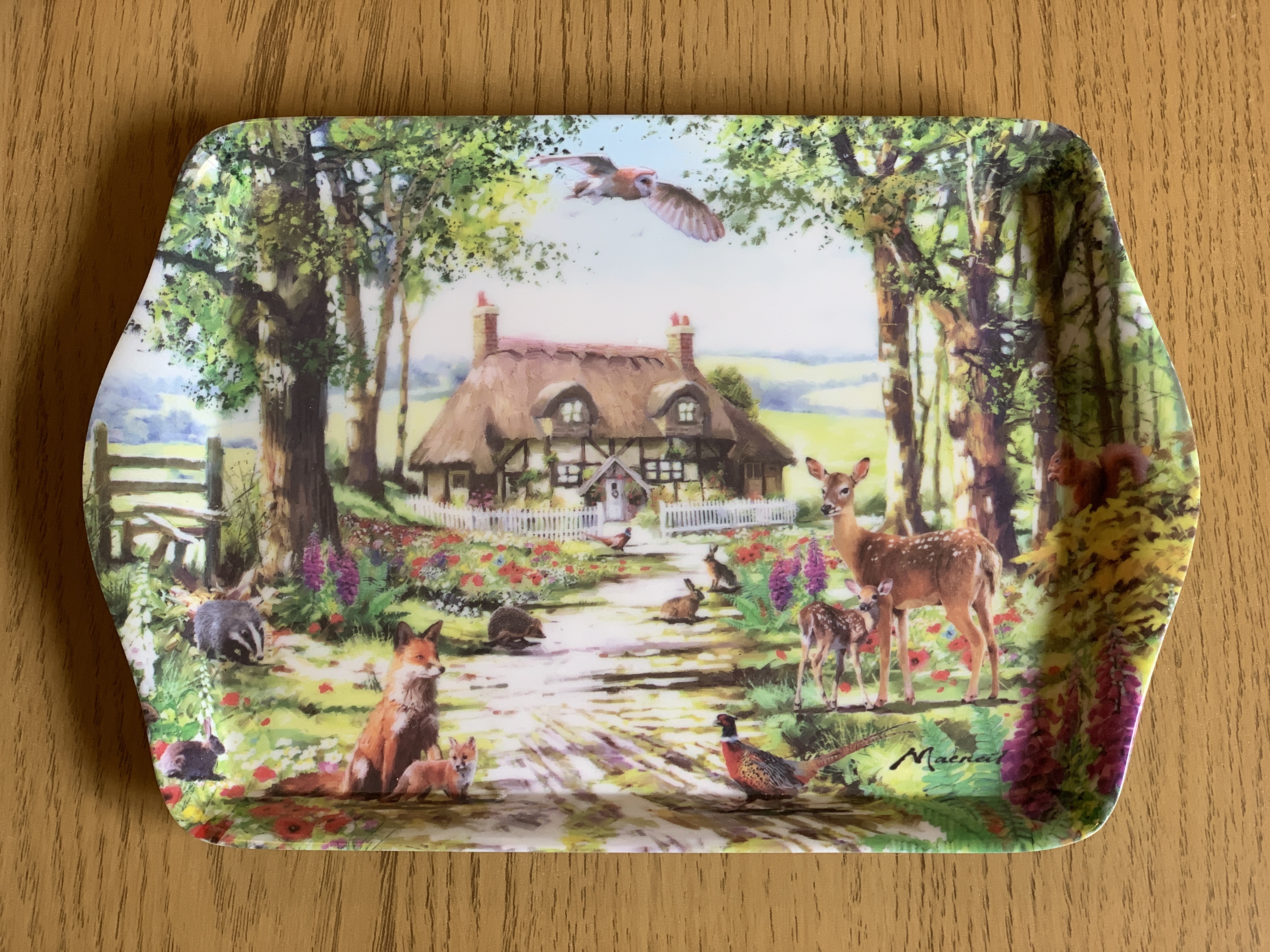Cottagecore
27.7.20
During a garden visit to my parents’ home in Hampshire, we talk about their decision to move us out of London in the late 1970s.
This is not a new conversation. As their eldest child, and aged 16 when they moved us to a sleepy hamlet deep in the countryside, I’d felt the culture shock the keenest.
But during this conversation my mother rushes off for a moment and comes back with something, proffering it like a vital piece of missing forensic evidence. It is a small plastic tray featuring a printed picture of a thatched half-timbered cottage in a forest glade, surrounded by friendly woodland wildlife.
This one image encapsulates the bucolic fantasy she had carried with her over all these years, a form of corroborative homeware. Her pastoral dream of home, or Cottagecore: rolling hills, woodland clearing, thatched roof, picket fence and crucially no human neighbours, only animal ones.
For me it had been too late, for as a teenager I had already fallen under the spell of city life and moved back to London a few years later. But the experience of moving from city to countryside, and then back again, stayed with me. In particular through ideas about what a home actually is with regard to its physical fabric as a dwelling, and its context and local community.
This is not a new conversation. As their eldest child, and aged 16 when they moved us to a sleepy hamlet deep in the countryside, I’d felt the culture shock the keenest.
But during this conversation my mother rushes off for a moment and comes back with something, proffering it like a vital piece of missing forensic evidence. It is a small plastic tray featuring a printed picture of a thatched half-timbered cottage in a forest glade, surrounded by friendly woodland wildlife.
This one image encapsulates the bucolic fantasy she had carried with her over all these years, a form of corroborative homeware. Her pastoral dream of home, or Cottagecore: rolling hills, woodland clearing, thatched roof, picket fence and crucially no human neighbours, only animal ones.
For me it had been too late, for as a teenager I had already fallen under the spell of city life and moved back to London a few years later. But the experience of moving from city to countryside, and then back again, stayed with me. In particular through ideas about what a home actually is with regard to its physical fabric as a dwelling, and its context and local community.